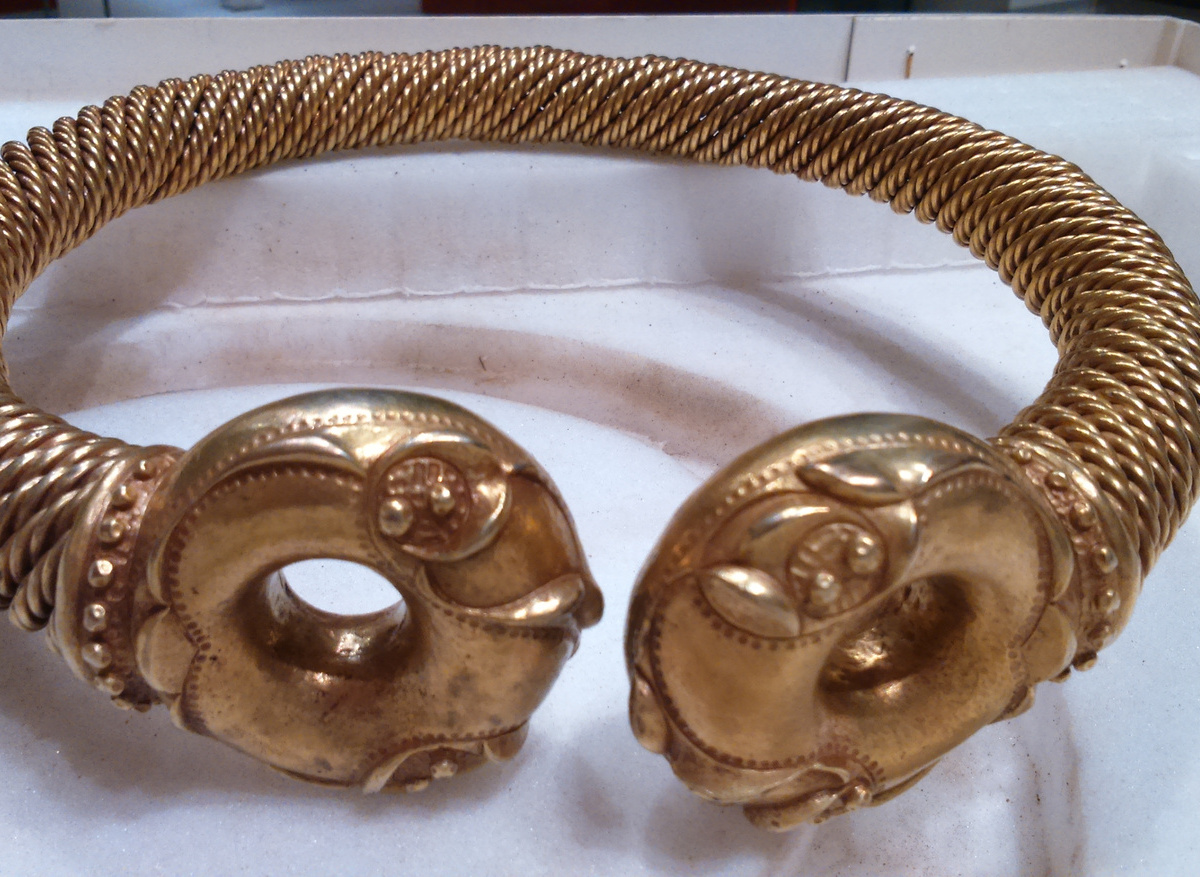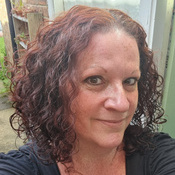I am a gold researcher and look at gold torcs (neck rings) that date from from the Iron Age period (about 2400 years ago) of Britain and Ireland. When I'm not reading papers or writing, I can often be found Behind the Scenes at the Museum. Last year, for the Day in Archaeology, I wrote about the process of going to see torcs, but this year, I wanted to talk a little about some of the fabulous people and museums that I have worked with or visited over the years.
Museum staff are the back-bone of artefact research. Not only do they facilitate access to the artefacts in their care, but they also take a personal interest in these objects, often becoming as absorbed in discovering and telling their stories as us fanatical specialists! And when I say museum staff, I don't just mean curators, but also the huge teams of people who conserve, protect, display, move and administrate these wonderful objects in museums around the country. It takes a village, as they say.
Over the last few years museums have faced an increasing number of media assaults as the Culture Wars, etc have sought to criticise the amazing work being done to update our understanding of collections and to expand museum audiences. At the same time, jobs have been cut, funding reduced and working conditions continue to worsen. Many museums currently stand under threat of closure.
The pressures against museums have never been greater and we need to support them. So this little blog is my way of saying thank you to all the wonderful museum staff across the country whose work means I can be a gold researcher: I really couldn't do this research without them! Below are a handful of examples from those we've worked closest with:
Firstly, I have to mention Glyn Hughes, Kevin Winter and the team at the National Civil War Centre, Newark who look after the Newark torc and who have, for the last nine years, allowed us open access to their torc. Thanks to their generosity and eagerness to learn, the Newark torc has undergone more study than almost any other Iron Age torc in the UK: it has been scanned, x-rayed, put under microscopes and thoroughly measured and examined. We have written three major papers about this torc (to read this research do go to our website) and we couldn't have done it without their help.
Similarly, Fraser Hunter, Mary Davis and the National Museums Scotland team in Edinburgh have helped us with all things Netherurd, Blair Drummond and beyond. Netherurd was the torc that made us realise that certain torcs weren't made the way people had previously assumed. I will never forget the day we raided the NMS office noticeboards for blu-tack so we could create an instant model to visualise how the Netherurd terminal was made!
The next museum to mention is the Yorkshire Museum in York and a huge thanks must go to Emily North and Lucy Creighton (now at DCMS) for all their help with regard to the Knaresborough Ring and for arranging and taking photos of the wonderful Towton torcs - which featured in our paper on the Viking thieved Knaresborough ring. All our interactions here have been via email and phone: working with museums doesn't always involve a visit.
To bring us up to date in torc visiting, I'd like to mention Joe Perry and the team at the Potteries Museum and Art Gallery in Stoke who once again, made us welcome, dug out both torcs and paperwork and allowed us full access to the Alrewas torcs, which I recently wrote about. Thank you!
It should also be noted that all the museums above either have not charged us image reproduction fees or have charged a token amount. Several of the museums we work with, including Yorkshire, release all their images under Creative Commons. These welcome gestures make a huge difference when you're an independent researcher with a non-existent research budget. These policies make sense for the museums too, as such practices encourage research and the wider dissemination of ideas regarding the objects in their care.
But these examples are by no means all - there's also many other museums (for example, Norwich Castle Museum and Weston Museum) who we've visited, emailed and talked to. I often talk to FLOs (Finds Liaison Officers working for the Portable Antiquities Scheme within museums) about new finds. There's also museum staff who contact us with information they think we might not be aware of, or concerning something they think we might be interested in. In every case, these interactions have been positive and collaborative.
Here's to our museums: they really do know it's good to torc! Go visit and support them all!


